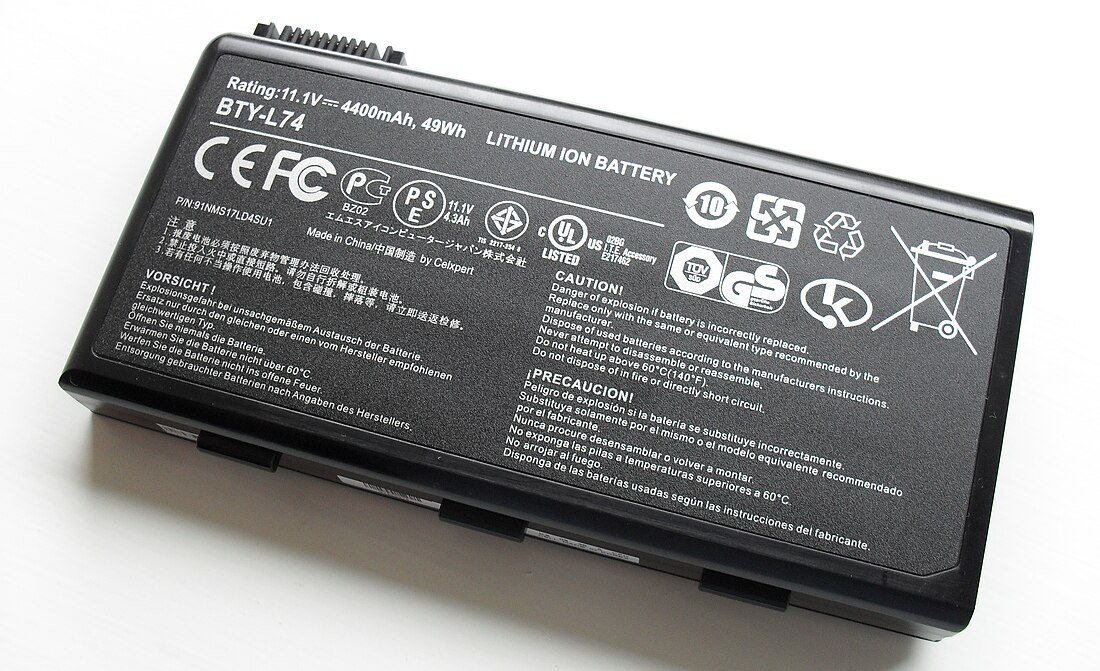Lithium-ion battery
rechargeable battery type From Wikipedia, the free encyclopedia
Remove ads
A lithium-ion battery is a lightweight, high-power battery used in computers and mobile phones. Li-ion batteries are made in several shapes, although a flat rectangle is most common. They are lighter than the nickel cadmium battery and the nickel metal-hydride battery. Li-ion batteries useful for devices that should be lightweight. They work by the movement of lithium ions through a membrane (thin sheet that allows some substances to pass through).

They are different from lithium batteries.[1] Lithium batteries contain lithium metal and are not rechargeable (primary cells). Lithium-ion batteries[2] do not contain lithium metal (only lithium compounds) and are rechargeable (secondary cells). They also do not last forever. Traditional lithium-ion batteries will have an average of 600 charge cycles. Some newer versions such as lithium iron phosphate and lithium titanate can last for 3000 cycles or more.
Remove ads
Safety issues
Lithium-ion batteries can be very dangerous. They can catch fire or explode if they are punctured, overcharged, or short-circuited, or if there is a manufacturing defect. In a multi-cell battery pack, the fire can spread from one cell to another, consuming the entire pack. The fire cannot be put out with a fire extinguisher or water. Flaming electrolyte can be ejected from the battery, setting fire to nearby combustible material. Many products have been recalled due to defective lithium-ion batteries. LiCo and NMC batteries are the most dangerous types. LiFePO4 and LTO batteries are less dangerous. They can still burn, but they burn more like ordinary flammable material, rather than the explosive fires seen with NMC and LiCo batteries.
Remove ads
Related pages
References
Wikiwand - on
Seamless Wikipedia browsing. On steroids.
Remove ads
